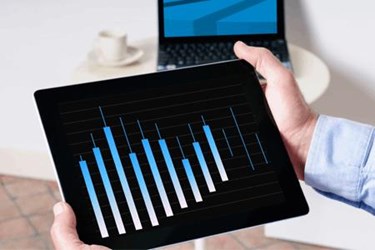Big Data Analytics: Real World Benefits For Retailers

By Jonathan Beckhardt, co-founder and GM of Insights, DataScience
Technology has positively impacted a wide variety of industries from finance to education to healthcare. The retail industry in particular has experienced one of the most radical technology transformations, the result of efforts to meet consumer demand for an increasingly personalized, on-demand shopping experience. Big Data analytics in particular have helped many retailers boost revenue and enhance the overall customer experience. In fact, 94 percent of retailers believe the customer of the future will be driven by technology.
While brands understand the value of Big Data, there is still debate on how to implement on the back-end, as well as what areas of the business will benefit most from adoption. There is no right or wrong answer, as the objectives of every business are different. However, there are key areas where Big Data analytics and data science can have a tremendous impact.
Discount Efficiency
Ninety-three percent of shoppers admit to using a coupon or discount code when they shop. In order to gain the most from these offerings, retailers must first ask, “How valuable is this deal to my business?” Sure, promotional deals may get customers through the door, but it’s hardly an effective strategy for building long-term customer loyalty. Instead, retailers can analyze historical data and leverage it in predictive modeling to determine what impact these offerings will have in the long-run. For example, a team of data scientists and analysts create a history of events of what would have happened had a discount not existed. They compare this with actual events where discounts were applied to gain a greater understanding of how effective each discount was. With this information, they assess whether the new purchases created by the discount outweigh the lost revenue from the shoppers who would have purchased the product without a discount. Armed with this knowledge, the retailer can readjust its discounting strategy, increasing the number of discounts across several categories while eliminating deals in less profitable categories. The result is a boost in average monthly revenue.
Product Sell-Through Rate
Retailers can also analyze data related to products offered and find what terminology, visuals, and pricing resonate most with current and potential customers. By altering the product showcase based on these analyzed data sets, retailers can improve sell-through rates. For example, Uber has based its entire business model on Big Data analytics for crowd-sourcing and product-sell through. Uber is able to take users’ personal customer data and match them with the most suitable drivers based on their location and rating. Due to this more personalized experience, customers prefer to enlist in Uber’s personalized offerings as opposed to the offerings of its competitors, regular taxi services.
Decrease Churn Rate
Creating customer loyalty is always a priority among brands, as the cost for acquiring a new customer is six to seven times more expensive than it is for retailers to keep current ones. Churn rate can be represented in a variety of ways, such as the number of customers lost, percent of customers lost, value of recurring business lost, and percent of recurring value lost. Through actionable insights gleaned from Big Data analytics, such as what type of customers are more likely to churn, retailers can successfully determine how to best alter their overall subscription strategies to avoid all of these scenarios. For example, after a large monthly subscription box retailer analyzes customer data, it can use the insights to find new subscribers who fit the profile of long-term customers. As a result, the retailer could decrease its monthly churn significantly. With this decreasing churn rate, brands are now able to better calculate lifetime value, scale faster and even make money back on steep marketing costs.
Given the ROI Big Data analytics delivers, retailers will continue to adopt solutions to increase customer lifetime value, improve net promoter scores and boost brand perception. In what seems like a win-win for brands, Big Data analytics allows retailers to gather a holistic view of who their customers are, how to best reach them and how their needs and preferences will further impact sales. With new technologies constantly on the horizon, retail is guaranteed to evolve significantly. However, one thing is certain: Big Data analytics is here to stay.
